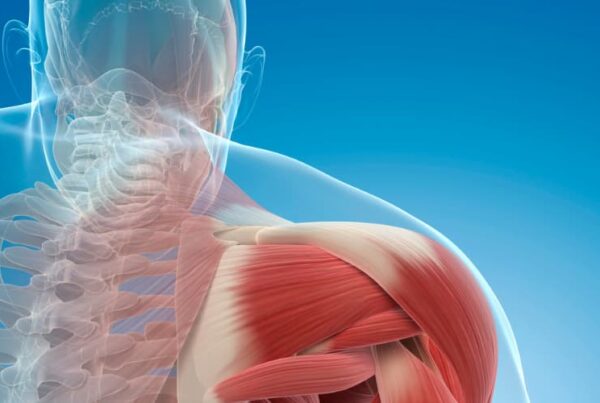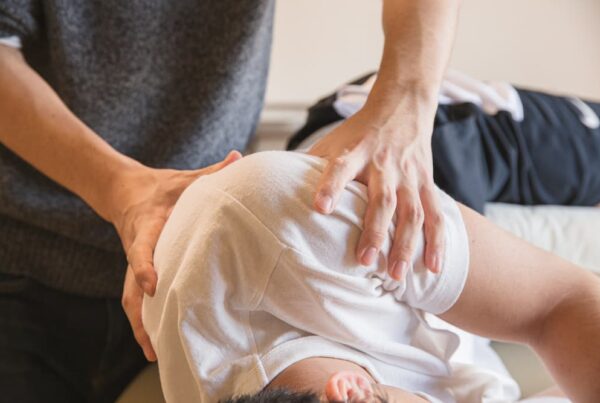Pregnancy can be one of the most special, yet challenging events in a woman’s life. While many women are able to seemingly breeze through pregnancy with relatively few problems, other women experience pain and discomfort. Given the number of physical, hormonal, and emotional changes that take place within a short time frame, it’s not surprising that many women experience so many complaints during pregnancy. For those women, osteopathic treatment in pregnancy can provide effective relief from discomfort, allowing expectant mums to better enjoy this time.
Among the most common complaints of expectant mums during pregnancy include:
- Lower back pain
- Pelvic pain
- Sciatica
- Neck and shoulder pain
- Upper back pain
- Shortness of breath
- Swelling
- Insomnia
- High blood pressure
- Fatigue
Pregnancy can be even more challenging for mums who may already have one or more children in the family. Lifting and carrying other children and placing them in cots and car seats can make issues such as back and pelvic pain even more painful. Expectant mums may also find that even simple activities such as sitting or walking may become uncomfortable or even result in pain. Trying to find a comfortable sleep position can become nearly impossible.
While such problems are often considered normal during pregnancy, this should not mean that mums must suffer. Any discomfort or pain is an indication that the body is experiencing problems with adapting to pregnancy and needs help.
Osteopathy can provide the ideal treatment to help mum’s adjust to their changing shape. The philosophy of this treatment is that both function and structure are interdependent and interrelated. Osteopathic treatments are designed to help normalise the body’s structure as well as its functions during pregnancy. By assisting the body in aligning and adapting during the pregnancy of progression, osteopathy can relieve much of the discomfort of pregnancy. The techniques used in osteopathic treatment are completely safe throughout pregnancy and are aimed at ensuring mum is completely comfortable.
Understanding the Cause of Pain and Discomfort During Pregnancy
A mum’s weight typically increases as her baby grows. This also causes a mum’s centre of gravity to change. Consequently, most expectant mums experience low back pain. This is frequently one of the chief complaints during pregnancy. Ligaments tend to soften during pregnancy, which can contribute to both new issues arising as well as causing old discomforts to recur. Furthermore, pregnancy can place additional pressure on various other areas of the body, including the pelvis and spin.
The Effect of Delivery
While the body must undergo multiple drastic changes during pregnancy, there are also significant changes that take place during labour and delivery. In the event of a natural vaginal delivery, it is necessary for the baby to pass through the mum’s pelvis. This leaves the pelvic bones, sacrum, and coccyx vulnerable to trauma. Any type of trauma that occurs during delivery can result in increased strain and tension in the ligaments, muscles, and bones of the pelvis. During the delivery process, a mum’s pelvis must mobile in order for the baby’s head to properly descend into the birth canal. Not only can strains this restrict the ability of the bones to move, as is necessary, during labour, but it can also limit the pelvic outlet’s size. While such distortion can be corrected on its own, it’s also not uncommon for this type of restrain to remain present for even years. This can interrupt the mother’s normal pelvic and spinal movements. Stresses that occur during childbirth which remain unresolved can contribute to chronic problems such as issues with menstruation, back issues, constipation, incontinence, headaches, and more. Among the goals of osteopathic treatment is to relieve old strains within the pelvic region, thus providing the best opportunity for an uncomplicated delivery and prevent ongoing problems.
Recovering from Pregnancy
Following delivery and birth, it is not only necessary for the body to recovery from the tremendous changes that have occurred during pregnancy but also from the effects of labour and delivery. Additionally, it is necessary for a new mum to cope with the ongoing demands of caring for a new baby. This alone can place a tremendous strain on the back and other parts of the body. Activities such as nursing in improper positions, reaching over a cot, lifting car seats in and out of the vehicle, and carrying a child on one hip can all take a tremendous toll on the body. Proper osteopathic treatment can help new mums to return to normal following delivery by relieving strains, making it possible for mothers to relax and enjoy their babies free from discomfort.
Why Choose Osteopathic Treatment During Pregnancy
Osteopathy during pregnancy can provide relief from the joint aches and pains associated with pregnancy as well as various other complaints, including sciatica and neck pain. By gently relaxing and easing the body’s soft tissues, an experienced osteopath can help to make the pregnancy experience more enjoyable. Osteopathy can also be used to relieve digestive and circulatory issues.
Osteopathy Prior to Pregnancy
Osteopathy can also be a good choice prior to actually conceiving. Ideally, it’s a good idea for any woman who is planning to conceive to undergo an osteopathic assessment. This is particularly important for any woman who has experienced any form of musculoskeletal problems, such as tension or pain in the neck or shoulders, lower back pain, serious injuries, or bad posture. It should be noted that any unresolved injuries, even slight injuries, could lead to restrictions or dysfunctions that could interfere with the postural adaptations that are necessary during pregnancy as well as labour.
Along with directing attention to the pelvis, osteopathy may also be used to treat changes that may occur to other areas throughout the body. A pre-conception assessment and treatment may also target lymphatic circulation and blood flow improvement in the abdomen and pelvis. This is particularly important today, as an increasing number of people spent long hours commuting in their vehicles or sitting at their desks.
Pre-conception osteopathy may also be used to balance the autonomic nervous system. Doing so is quite important for providing a more comfortable experience for a woman once she becomes pregnant.
Osteopathy in Pregnancy
Although treating dysfunction should ideally be done prior to conception, treatment during pregnancy can still be quite beneficial to an expecting mum and her baby. Pregnancy is an extremely challenging time during which the body undergoes massive changes within a relatively short time span.
Changes that Take Place During Pregnancy
Relaxing plays a critical role during pregnancy by helping ligaments to soften, which also helps an expectant mum’s body to adapt to necessary changes during pregnancy. While relaxin can be beneficial, in some situations the resulting softening of the ligaments can contribute to pain and even strains. This can be particularly true in the sacroiliac joints, located in the back, as well as in the front of the pelvis. Individuals who have naturally looser joints, a condition known as hypermobility, may find they are even more likely to experience pain. In such situations, osteopathy can help to restore balance to the pelvic ligaments. This makes it possible for bones in this region to settle into their own natural position.
Mums who experience problems with an increased curve to the lower back may suffer from compression of the soft tissues and joints in the back. While this can be quite uncomfortable, osteopathic treatment can provide relief.
Postural and Mechanical Changes-A mum’s posture can change significantly due to the body’s centre of gravity shifting. It is critically important to ensure there are no restrictions so that the body is able to adapt to changing demands. This includes ensuring that the sacrum has normal mobility and is able to move properly during active labour, allowing the baby to pass more easily through the birth canal. In addition to the pelvis, osteopathy can also correct issues in the shoulders and neck. Today, it is not uncommon for many women to experience tension and pain in the shoulders and neck due to sitting at a desk for hours daily. This is not only stressful and uncomfortable, but can also make it difficult for an expectant mum to achieve a proper position in labour. The squat position is one of the most beneficial positions during labour to assist in helping the baby descend.
Circulation
During pregnancy, significant changes typically occur in the body’s circulatory systems. This includes an increase in the amount of blood volume circulating within the body. Venous drainage often becomes less efficient as the uterus expands. This can lead to such issues as varicose veins and haemorrhoids. Additionally, fluid retention can cause carpal tunnel syndrome and ankle swelling. Certain osteopathic techniques can assist in reducing swelling.
Ensuring the rib cage and thoracic spine are properly mobile can also help mums to breathe more easily and take in more oxygen for both the mum and her baby. This can lead to the ability to think more clearly as well as increased energy.
The Digestive System
Constipation is frequently one of the systems experienced during pregnancy. Although it is vitally important that an expectant mum ensure she receives a healthy diet and partake in regular movement to reduce such issues, osteopathic treatment can also help to restore the body’s nerve supply. By easing pressure frequently placed on the diaphragm during pregnancy, osteopathic treatment can help to decompress the spine and provide a mum’s internal organs with additional space to reduce such problems as heartburn.
Assisting with an Easier Labour
It’s completely natural for new mums to experience some sense of anxiety prior to giving birth. Osteopathy can help to prepare new mums and their bodies for the tremendous demands associated with giving birth. Any imbalance present within the pelvis as well as the pelvic ligaments can affect the baby’s position. Gentle osteopathic techniques can be used to correct such problems. Not only will osteopathic techniques help to move the baby into a more favourable position but can also be used to improve the likelihood of a mum experiencing a problem-free delivery. Even mums who have gone past their due dates may find that osteopathy can be beneficial for naturally and gently facilitating labour, a much more pleasant alternative to induction.
Osteopaths can also provide expectant mums with beneficial advice on breathing exercises she can use for relaxation, reducing stress and blood pressure, and even stretching exercises that can maximise her wellbeing and that of her baby.
When mums go into active labour, the baby will begin descending through the pelvis. During the process of childbirth, numerous factors can play a role in how the baby descends through the pelvis. For instance, there is a chance the pelvis could become twisted in the event of a delayed labour. In such cases, the passage of the baby through the birth canal would be compromised. Osteopathic treatment can assist in aligning a mum’s lower back and pelvis in order to ensure they are in the ideal position for giving birth.
Is Osteopathy Safe During Pregnancy?
While it is completely natural for an expectant mum to have questions about the safety of any treatment during pregnancy, it is important to understand that osteopathy is completely gentle and safe for both the mum and her baby. Osteopathic techniques used are selected with the sole goal of minimising any amount of risk to mum and baby. The comfort of the mother are always taken into considering when selecting techniques and such techniques may be adapted to suit the needs of the patient. It is not uncommon for special cushions to be utilised during osteopathic treatments to assist the patient in lying in preferred positions for treatment. Osteopathy is appropriate for any expectant mum, regardless of her stage of pregnancy.
During the first trimester, osteopathic treatments typically do not involve any type of spinal manipulation. It is during this time, that the pelvis starts tilting forward, allowing more room for the uterus to expand. Unfortunately, this can result in lower back pain as well as tightness of the thoracic cavity. During the second trimester of pregnancy, curvatures of the neck and thoracic cavity continue to increase. Breast tissue also increases during the second trimester, which can place additional pressure on the shoulders, causing them to move forward. The third trimester is typically the most difficult for expectant mums. The lumbar curve becomes more exaggerated, which places more stress on the lower back. All of these changes can create a number of physical discomforts. The relaxing approach of osteopathic therapies is one of the many reasons why so many women choose it over drug therapy, which may not be appropriate or safe for a developing baby.
Postnatal Osteopathic Treatment
Osteopathy can also be beneficial following delivery. Depending on the type of labour a mum experienced, she may experience a wide range of postnatal issues. Osteopathy can assist in restoring as well as maintaining normal pelvic mobility and alignment. This can alleviate any discomfort or pain a mum may experience following labour. Women who have experienced unresolved stresses following labour may find they suffer from back problems as well as bowel problems, including constipation, stress incontinence, and problems with menstruation. Osteopathic treatment can assist with relieving the pains and aches associated with nursing, lifting prams and car seats, as well as carrying a newborn baby. Postnatal osteopathic treatment can also provide long term preventive care, making it possible for a new mum to relax and enjoy motherhood without aches and pains.
It’s not uncommon for many new mums to forget that their pelvic and back alignment may have been affected as a result of pregnancy and delivery of their new babies. As a result, many new mothers often put up with aches and pains that could have been relieved. Following labour and delivery, it’s important for new mothers to undergo a postnatal checkup.
Even one or two gentle movements following the birth can assist a new mother in coping with some of the postural and mechanical strains placed on her body during pregnancy and delivery. An osteopath can also work in conjunction with lactation consultants to provide postural advice to facilitate breastfeeding and prevent stains on the shoulders, neck, and back.
Depending on the strains experienced during delivery, some mums may need between three and six treatments along with regular checkups.
Techniques Used in Osteopathy
Osteopathic treatments are significantly influenced by the medical history of the mum as well as her symptoms and physical condition. Therefore, treatments approaches may not be the same for individual patients. Overall, the following techniques may be used for expectant mums:
- Soft tissue massage-used for the purpose of reducing muscle tension
- Gentle joint movement-used to improvement joint nutrition and range of motion
- Neuromuscular release-used to relieve muscle spasms
- Manipulation of specific joints-used to improve range of motion
Although osteopaths utilise a wide range of techniques, surgery nor drugs are used in osteopathic treatment.
Accessing Osteopathic Treatments Before, During, and After Pregnancy
If you are considering accessing osteopathic care, it is important to note that you do not need to be referred by your general practitioner in other see an osteopath privately. Please note that only individuals who are registered with the General Osteopathic Council are allowed to call themselves osteopaths or practice osteopathy.
When to Seek Osteopathic Treatment
Most women tend to see osteopathic treatment during pregnancy when they experience any of the following symptoms:
During pregnancy, women experience the largest degree of postural changes they will ever undergo in their lives. Weekly, as the baby continues growing and the womb expanding, expectant mums not only gain weight but experience their centre of gravity continuing to change, resulting in significant postural changes. This can cause an array of aches and pains.
The goal of osteopathy is to provide relief from such aches and pains while also assisting expectant mothers in ensuring their bodies are in peak condition for giving birth. By improving your quality of life, osteopathy can help mums to actually enjoy their pregnancies. The safety of both mum and baby is the main concern during osteopathic treatment.
Related Articles
- Osteopathy FAQs
- How to Manage Back Pain During Pregnancy
- Low Back Pain During Pregnancy
- What Does Cranial Osteopathy Do for Babies?
- Introduction to Cranial Osteopathy



